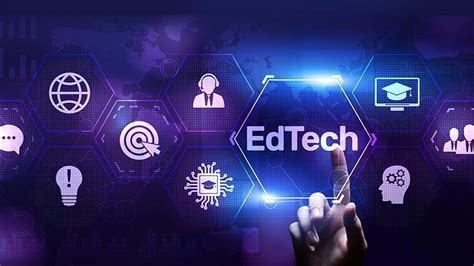Transforming Education with Technology: How EdTech is Revolutionizing Learning
In today’s digital age, the integration of technology in education, commonly referred to as EdTech, is transforming the way we learn and teach. From interactive learning platforms to AI-driven personalized education, technology is making education more accessible, engaging, and effective. This article explores the various ways technology is revolutionizing education, the benefits it offers, and the challenges that need to be addressed to fully realize its potential.

The Rise of EdTech
The advent of the internet and digital tools has opened new horizons in the education sector. EdTech has become a buzzword, encompassing various applications and tools designed to enhance learning experiences. These technologies are not only making education more interactive but also more personalized, catering to individual learning styles and paces. The rapid growth of EdTech has been driven by the increasing demand for flexible and accessible learning solutions.
Key Areas Where Technology is Making an Impact
- Interactive Learning Platforms
- Platforms like Khan Academy, Coursera, and Udemy provide students with access to a vast array of courses, often for free or at a fraction of the cost of traditional education. These platforms offer interactive videos, quizzes, and assignments that make learning engaging and fun. Students can learn at their own pace and revisit materials as needed, ensuring a deeper understanding of the subject matter.
- Artificial Intelligence and Machine Learning
- AI is revolutionizing education by providing personalized learning experiences. Systems like smart tutors can adapt to the learning pace of each student, offering customized resources and feedback. AI-driven tools can analyze student performance data, identifying areas where students struggle and offering targeted interventions. This level of personalization helps students improve their performance and stay motivated.
- Virtual Reality (VR) and Augmented Reality (AR)
- VR and AR are making learning more immersive. Imagine a history lesson where students can virtually visit ancient civilizations or a biology class where they can explore the human body in 3D. These technologies enhance engagement and retention by providing experiential learning opportunities. Students can interact with virtual environments, making abstract concepts more tangible and easier to understand.
- Gamification
- Incorporating game elements in education, known as gamification, has proven to boost student engagement and motivation. Tools like Kahoot! and Classcraft use points, badges, and leaderboards to make learning competitive and fun. Gamification encourages students to participate actively and strive for better performance.
- Cloud Computing
- Cloud-based tools and platforms allow students and teachers to access resources and collaborate from anywhere in the world. Solutions like Google Classroom and Microsoft Teams enable seamless communication and resource sharing, fostering a more connected learning environment. These platforms support a wide range of educational activities, from assignments and grading to discussions and feedback.
Benefits of EdTech
The integration of technology in education offers numerous benefits:
- Accessibility: EdTech breaks down geographical barriers, making education accessible to anyone with an internet connection. This democratizes education, allowing students from remote or underserved areas to access quality learning materials and opportunities.
- Flexibility: Students can learn at their own pace and on their own schedule, accommodating different learning styles and life commitments. This flexibility is particularly beneficial for adult learners and those balancing education with work or family responsibilities.
- Engagement: Interactive and multimedia content keeps students engaged and interested in their studies. EdTech tools use videos, animations, and interactive exercises to make learning more dynamic and enjoyable.
- Data-Driven Insights: EdTech tools provide valuable data that educators can use to improve teaching methods and student outcomes. Analytics can identify trends, track progress, and highlight areas for improvement, enabling more informed decision-making.
Challenges and Considerations
While the benefits of EdTech are numerous, there are also challenges that need to be addressed:
- Digital Divide: Ensuring that all students have access to the necessary technology and internet connectivity is crucial. Disparities in access can exacerbate educational inequalities, leaving some students behind.
- Teacher Training: Educators need proper training to effectively integrate technology into their teaching practices. Continuous professional development is essential to keep teachers updated with the latest tools and methodologies.
- Privacy and Security: Safeguarding student data and ensuring privacy is a significant concern that must be addressed. EdTech companies and educational institutions must implement robust security measures to protect sensitive information.
The integration of technology in education is not just a trend; it is a fundamental shift in how we approach teaching and learning. EdTech provides innovative solutions that make education more accessible, engaging, and effective. As we continue to embrace these technological advancements, it is essential to address the challenges and ensure that the benefits of EdTech are realized by all students, regardless of their background.
By staying informed and adaptable, educators, students, and parents can leverage the power of EdTech to create a brighter, more inclusive future for education. Embracing these changes will enable us to build a more resilient and effective education system that meets the needs of the 21st cent.